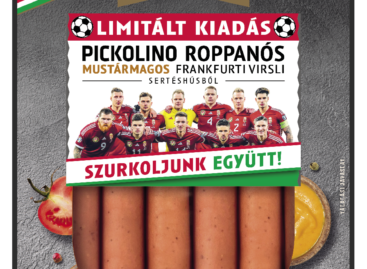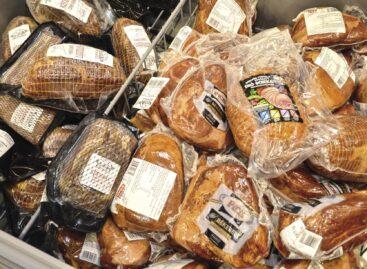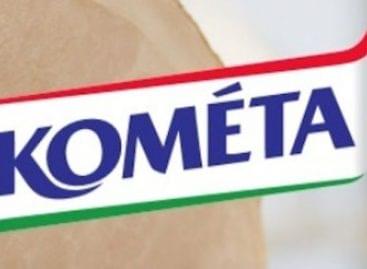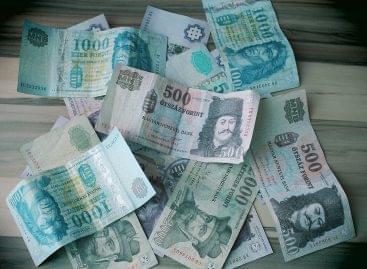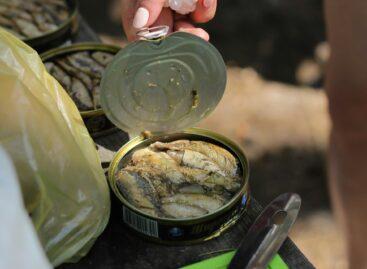Forward to the past
The salami and sausage market has been contracting for years: data courtesy of Pick Szeged Zrt. show that between 2008 and 2012 volume sales declined by 15.5 percent, while value sales only augmented by 4.1 percent, way below the level of real value. 90 percent of the plunge occurred in the sausage segment and 10 percent of it hit salamis. According to Zoltán Nagygyörgy, product manager with Pick Szeged Zrt. the drop in consumption was mainly the result of unfavourable macroeconomic indicators and the price increase forced by elevated fodder and live pig prices. In addition to this, people started buying more directly from farmers and local butchers – these sales cannot be measured by market research companies. Krisztina Bódi, marketing director of Kométa 99 Zrt. told our magazine that because of the peculiarities of the Codex Alimentarius products manufactured abroad can be marketed as salami even if they would only qualify as sausage if they were Hungarian-made. This is a big problem for domestic manufacturers of quality salami. Discounters have managed to increase their share in sales and people have started turning to cheaper meat products (wiener, Bologna and other cold cuts) due to budget constraints. Éva Tamáskovitsné Gila, product manager with Gyulahús Kft. told Trade magazin that the domestic market is increasingly concentrated and international products’ market presence is getting stronger. PL products are gaining ground and manufacturers are starting to offer smaller packaging units. Péter Fábián, trade marketing expert of the Debreceni Csoport Húsipari Kft. is of the opinion that not only cheaper but also higher quality products will be selling better in terms of volume. His view is that brands rule the salami and sausage segments because they have an additional value that builds consumer loyalty. This June Pick Szeged came out with the Família Harmónia deli and red pepper salamis in the no-mould category – these products offer great value for money. All Pick brands – PICK, HERZ, DÉLHÚS, RINGA, FAMÍLIA – represent high quality, delicious flavour and a pleasant look. The HERZ brand is 125 years old this year and alongside the popular HERZ winter salami HERZ Classic, Gourmet and Vital salamis can also be found on store shelves. Kométa is currently busy introducing its Next salami product to the market: the new product combines traditional and modern elements and it tastes lighter than the average salami. Shoppers can find it in stores as 400g whole salami and in deli counters. Kométa has one umbrella brand, because the company’s priority is to make consumers know that every time they buy Kométa they get a high-quality product with a great price/value ratio. ZIMBO sales director Tamás Kováts told us that the majority of the salami they produce goes to export. ZIMBO keeps innovating and introducing new products. At the moment they are putting four clean label products on the market: ZIMBO sausages in cheese and pepper coat and two ZIMBO Turista products (also in cheese and pepper coat). All four of them are gluten-, glutamate-, soy- and colouring-free; the pepper coated ones are lactose-free too. Gyulahús Kft. has recently refurbished the look of its products: the retro-style new packaging reflects the nearly 150-year traditions of the band. The company also revitalised András Stéberl’s famous sausage, the winner of the 1935 Brussels Expo. Gyulahús makes no compromises in quality, this is one of the reason why they also support the Good Cafeteria programme. Several products are Hungarian Product Grand Prize winners and Gyulai earned the Superbrands recognition once again in 2013. This year Debreceni Csoport Húsipari Kft. updates its Csabahús brand. The new design is modern and communicates the most important company values. In the Kaiser product line this year’s new products are Kaiser Vadász salami, the cheese version of the Kaiser Turista cold cut and Kaiser Chili salami in 75g version. The company never ceases to innovate and they don’t shy away from deleting a product from their portfolio if it doesn’t sell well, in order to optimise production and trading processes. n
Related news
Új PICK Pickolino crackling, mustard seed frankfurter
Now that it is high season for football fans, we…
Read more >Ham could perform well again this year
A rather big double-digit decline in volume sales of Easter…
Read more >GVH: the competition office procedure reached its goal, Kometa fulfilled its commitments
Kometa fulfilled its commitments, thus the previous procedure of the…
Read more >Related news
KSH: Gross average earnings were HUF 605,400 in February 2024, 14.0 percent higher than a year earlier
In February 2024, the gross average earnings of those employed…
Read more >Sándor Czomba: 566 micro, small and medium-sized enterprises receive capacity-building support
566 people successfully applied for the capacity expansion support aimed…
Read more >UN: worldwide food insecurity continued to increase last year
The insecurity of the food supply has increased further in…
Read more >
